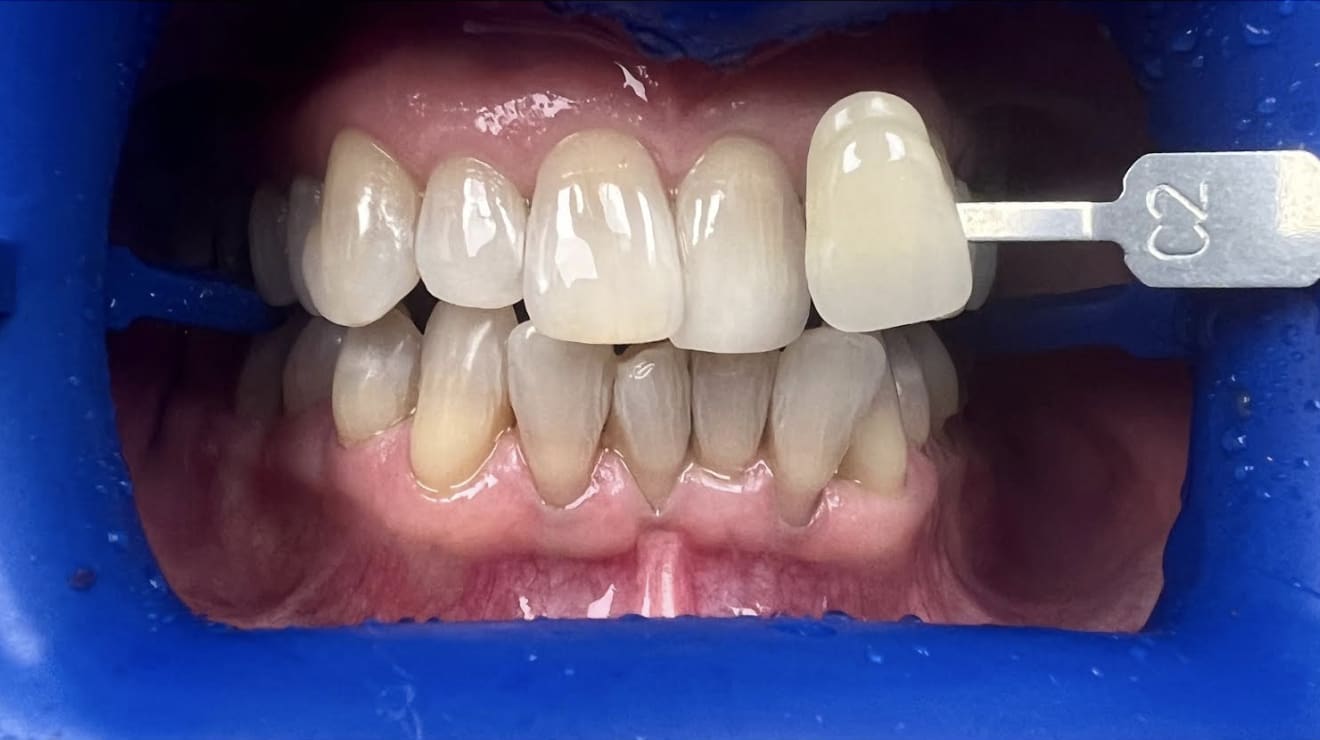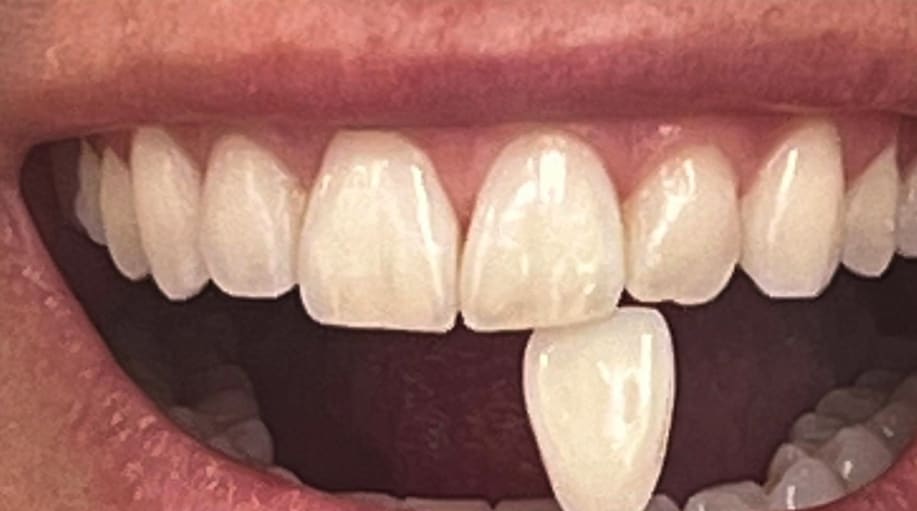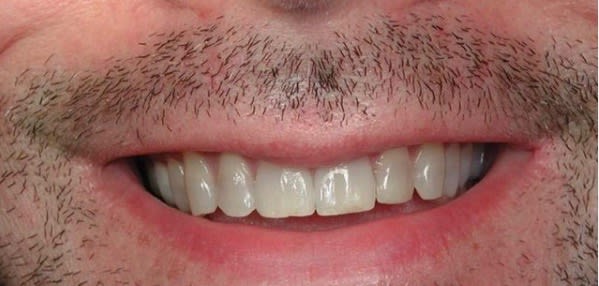
The Skinny
AEDIT
Before & After Images by Provider












Before & After Images by Provider
Teeth Whitening Solutions
The Specifics
Overview
Over a lifetime, people will inevitably confront some level of teeth staining that will prompt them to consider a dental procedure like teeth whitening. Many factors play a role in the severity of teeth staining including genetics, condition, and maintenance of teeth, and even general lifestyle habits and routines. Not only do these factors contribute to your teeth staining, but they can also determine the effectiveness of teeth whitening procedures to an extent. Regardless, most people who encounter teeth staining can experience relief with teeth whitening systems.
What is Whitening?
Teeth whitening is a popular procedure that countless individuals choose to achieve whiter teeth. This non-invasive dental procedure is straightforward and performed in a dental office by a professional. A teeth whitening procedure uses a particular type of tooth bleaching agent to help neutralize the appearance of stains on teeth, resulting in a whiter, brighter appearance.
There are multiple teeth whitening methods readily available with both over-the-counter options created for home use along with home whitening bleaching products designed to mimic the in-office procedure. As with any cosmetic solution, for the most effective results, choosing a professional whitening treatment done in-office is the best choice.
Why People Consider Teeth Whitening
For most people, the trajectory to teeth staining begins with tooth enamel. As we eat and chew foods, a thin coating begins to form on the enamel layer called pellicle. While undetectable during the eating process, this coating attracts various food stains. These surface stains are then absorbed by the porous enamel which stores those stains in place. Over time, the constant process of eating will cause teeth to become stained.
While it’s unlikely to avoid teeth staining altogether, certain foods and situations exacerbate the process. The main food and beverage culprits are, of course, dark-colored liquids like coffee and red wine. It’s extremely common for regular coffee drinkers to seek and use tooth whitening solutions on an ongoing basis. Certain lifestyle behaviors like smoking, chewing tobacco, and poor dental maintenance can contribute to more escalated teeth staining. There are also those circumstances that are beyond our control which can lead to severe teeth staining like trauma due to injury, certain antibiotics used to treat chronic illness, and the bodies natural aging process.
Who Should Consider Teeth Whitening?
The good news about teeth whitening procedures is that virtually everyone who is experiencing some level of teeth staining is a good candidate for treatment. Teeth whitening is an extremely low risk and non-invasive dental procedure that allows it to be a great option for people across the spectrum. Anyone from the person dealing with coffee stained teeth to the daily smoker can experience highly effective results with the bleaching process conducted during teeth whitening treatment.
For the most effective results, it is helpful to pinpoint the source of the teeth staining to determine which teeth whitening method to use. A food or simple lifestyle related stain may require a less complex teeth whitening method than a stain related to some type of trauma or more serious condition that has resulted in teeth staining. There are even some teeth staining cases where teeth whitening treatments may not be the best option long term.
There are a few cases where a person may not be a great candidate for teeth whitening and these instances typically include an underlying dental issue that would not be remedied or even become further irritated with teeth whitening. People with sensitive teeth and those who grind their teeth may find the teeth whitening process too intense. Likewise, those with extremely thin tooth enamel or gum tissue line recession may find teeth whitening to irritate instead of offering improvement. Teeth whitening should also only be used on natural teeth. For those experiencing teeth staining that are using crowns or veneers, replacements will be more effective than a teeth whitening treatment.
Pros of Teeth Whitening
There are many benefits to enjoy when choosing to undergo a teeth whitening procedure. The primary benefit, of course, is the opportunity to whiten your teeth. This can lead to many positive counter effects including a brighter smile and a self-esteem boost. Teeth that have undergone the teeth whitening process look healthier and give the face a healthier, more youthful appearance. Compared to many other cosmetic dental procedures, teeth whitening is also painless. In-office teeth whitening can be performed in under an hour and requires virtually no recovery.
Cons of Teeth Whitening
When it comes to cosmetic dentistry, teeth whitening is one procedure where there aren’t many side effects. In some cases, tooth whitening may cause tooth sensitivity. This is especially common for people who have naturally sensitive teeth. There is also the possibility of some gum irritation. Typically, this only occurs when there are missteps in the teeth whitening process including using too much of the whitening agent or an improper fit of the tray. In other cases, teeth whitening simply may not be the most effective method. For more acute dental issues that may cause discoloration like tooth decay, teeth whitening products and procedures will be ineffective.
Cost
Teeth whitening is a relatively inexpensive dentistry procedure, however, the actual cost may vary depending on the method used and the dentist performing the treatment. While there are many over-the-counter teeth whiteners that you can use at home for under $50, in-office procedures will cost more, but be much more effective. In-office teeth whitening treatments can cost up to $1,000 depending on the method and frequency of treatment.
Find out exactly how much you can expect to spend for each teeth whitening method and how to cover those costs.
Recovery
Teeth whitening is one of the few cosmetic procedures that require no recovery time. The longest in-office teeth whitening treatment lasts an hour and no follow-up is required. While there are a few general behavioral practices to follow after your teeth whitening treatment to maximize results, these in no way impact recovery.
Learn what you can expect after your teeth whitening treatment along with tips to maintain your results.
Before & After
Prepping for your teeth whitening treatment is just as simple as the procedure itself. You’ll want to go into your appointment with clean teeth, so brushing beforehand is recommended. After your teeth whitening treatment, you’ll want to keep a careful eye on what you eat and drink. It’s best to avoid certain beverages that are notorious for staining teeth like coffee and dark sodas, along with foods that stain including berries and chocolate.
Get familiar with the complete teeth whitening process from choosing your provider to what to do after your treatment is complete.
Teeth Whitening Procedure & Methods
Teeth whitening serves one main goal and that is to whiten teeth to a more aesthetically pleasing shade. A typical in-office bleaching procedure with a cosmetic dentistry professional consists of using a light-activated bleaching agent to whiten teeth approximately 7 shades lighter. While teeth whitening can produce dramatic effects, the process is relatively simple and quick. Most in-office whitening procedures are done in under an hour and require no additional time in-office or subsequent touch-up procedures.
Types of Teeth Whitening Methods
For in-office teeth whitening procedures, dentists typically use three main methods: hydrogen peroxide gel, bleaching, and laser whitening.
Hydrogen Peroxide Gel Teeth Whitening: During the hydrogen peroxide gel teeth whitening process, a gel containing a 15% or 25% concentration of hydrogen peroxide acts as the bleaching agent. The first step in this teeth whitening procedure involves placing retractor inside the mouth to fully expose the teeth. A hardening resin is then applied to the gums to prevent irritation from the hydrogen peroxide gel. The whitening gel is then applied and activated by a low heat, ultraviolet blue light. After twenty minutes, the bleaching gel is removed, whitening process checked, and then reapplied. This process is repeated twice more before the retractor is removed and the teeth whitening process is complete.
Deep Bleaching: The deep bleaching teeth whitening method uses a combination of an in-office procedure and an at-home process to restore brighter teeth. For this teeth whitening process, the in-office procedure follows the same process using hydrogen peroxide gel as a whitening solution. However, trays are customized to fit individual teeth and a second visit along with continued use of the trays over two weeks is required to reach the desired shade of white. This teeth whitening procedure is typically reserved for people who are dealing with more stubborn stains or those caused by more serious conditions.
Laser Whitening: This teeth whitening method is the fastest and also the most expensive. Like the previous teeth whitening methods mentioned, a bleaching agent is applied to the teeth. Instead of ultraviolet light activation, a laser is used. The immensely accurate precision of a laser activates the bleaching agent on each tooth for 30 seconds. This allows for a complete teeth whitening treatment in 30 minutes.
The Takeaway
Alternatives to In-Office Teeth Whitening
There are many teeth whitening products available instead of (or in addition to) visiting a dentist for in-office teeth whitening treatment. Some of the most common alternatives include:

